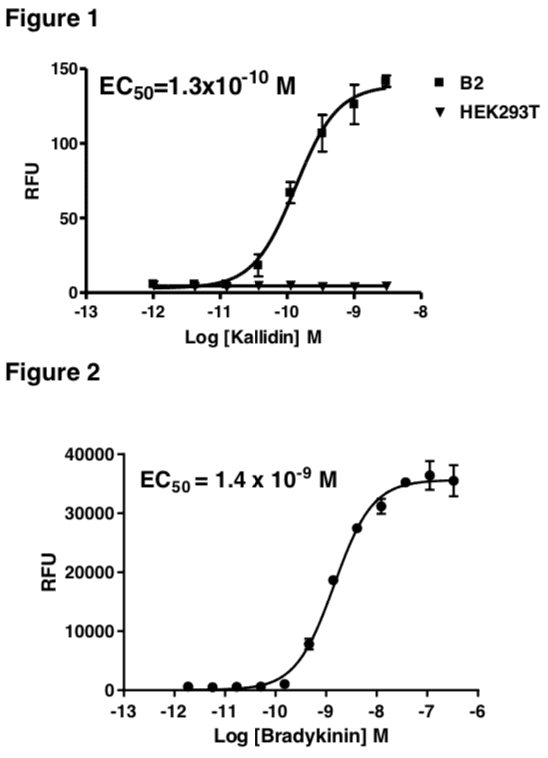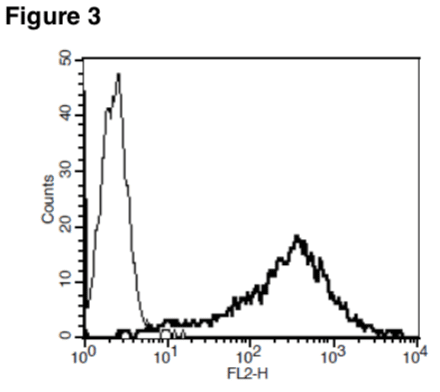Product Information
Catalog Number:
H1199
Lot Number:
H1199-062310
Quantity:
1 vial (2 x 106) frozen cells
Freeze Medium:
Sigma Freezing Medium (C-6164)
Host cell:
HEK293T
Transfection:
Full-length Human BDKRB2 cDNA (GenBank Accession Number NM_000623) with FLAG-tag sequence at the N-terminus
Recommended Storage:
Liquid nitrogen upon receiving
Propagation Medium: DMEM, 10% FBS, 1 μg/mL puromycin
Stability:
Stable in culture for minimum of two months
Data Sheet
Background: Bradykinin receptor B2 is a G protein-coupled receptor for bradykinin. B2 receptor agonists may have important clinical value in the treatment and prevention of various cardiovascular disorders such as hypertension, ischemic heart disease, left ventricular hypertrophy, ventricular remodeling and congestive heart failure, as well as diabetic disorders by mimicking the reported beneficial effects of bradykinin. Blocking bradykinin B2 receptors after experimental cerebral ischemia reduces brain edema, infarct volume and neuronal necrosis, and improves neurological outcome. Thus, B2 antagonists may be a promising new class of compounds for clinical use after the onset of cerebral ischemia.
Application: Functional assays


Figure 1. Dose-dependent stimulation of calcium flux upon treatment with ligand, measured with MultiscreenTM Calcium 1.0 No Wash Assay Kit (Multispan MSCA01). Figure 2. Dose-dependent stimulation of calcium flux upon treatment with ligand, measured with MultiscreenTM Calcium 1.0 No Wash Assay Kit (Multispan MSCA01). Figure 3. Receptor expression on cell surface measured by flow cytometry (FACS) using an anti-FLAG antibody. Thin line: parental cells; thick line: receptor-expressing cells.
References:
Hess et al. (1992) Cloning and pharmacological characterization of a human bradykinin (BK-2) receptor. Biochem Biophys Res Commun 184:260-268.
Heitsch (2003) The therapeutic potential of bradykinin B2 receptor agonists in the treatment of cardiovascular disease. Expert Opin Investig Drugs 12:759-770.
Sobey (2003) Bradykinin B2 receptor antagonism: a new direction for acute stroke therapy? Br J Pharmacol 139:1369-1371.
